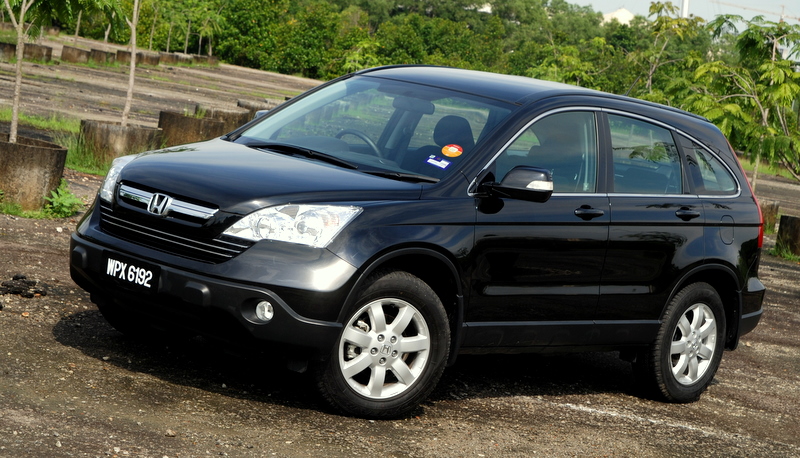Honda produces the CR-V in Japan and the United Kingdom for worldwide markets, and as of 2007, North American CR-Vs are produced in East Liberty, Ohio. The CR-V is produced in Wuhan for the Chinese market by the Dongfeng Honda Automobile Company, a joint venture with Dongfeng Motor Corporation. Starting in fall 2007, North American CR-Vs will also be produced in Jalisco, Mexico in addition to Britain, Japan and the US due to high demand. Honda executives considered making the CR-V as one of the first vehicles to be produced at Honda's new facility currently finishing construction in Greensburg, Indiana that opened in fall 2008; however, the facility will initially exclusively produce the Civic, which may free up space in East Liberty for CR-V production from the 2009 model year onward. Elsewhere, the CR-V is Honda's smallest SUV other than the related Element sold in Canada and the United States, and the HR-V sold in Europe. In size, the CR-V slots between the Element and Pilot, but due to the Element's discontinuation after the 2011 model year, the CR-V will once again become Honda's entry-level SUV.

CRV Honda
Introduced in Japan in 1995, the CR-V was Honda's first in-house designed SUV and was originally intended to be a niche vehicle only. Honda was hesitant to market the vehicle, since many felt the car did not have potential to sell alongside the Honda Passport and to take over the role of Honda's entry-level SUV. In the United States, it was displayed for the first time at the 1996 Chicago Auto Show. Citing strong sales from the comparable Toyota RAV4 upon its release, the model was then brought stateside in February 1997. The CR-V appeared around the same time as the Subaru Forester and a couple years after the JDM Nissan Rasheen.

08 Honda CR V dash ucc
The original CR-V's production lasted from 1995 to 2001. Upon introduction, the model had only one trim level, which would later be known as the LX model trim; it was powered by the 2.0 L straight-4 B20B producing 128 hp (95 kW) and 133 lb·ft (180 N·m) of torque. Outer dimensions for this engine would be identical to the Integra's 1.8 L engine, but internally the engine had a larger 84 mm (3.3 in) bore to add the extra displacement needed to produce more torque. The engine utilized a one-piece cylinder sleeve construction unique from any other B-series engine due to overlapping combustion chambers. The chassis was a unibody design with a 4-wheel double wishbone suspension. Inside, the rear seats were able to fold down, and a picnic table was stowed in the rear floor area. A common external trait that was visible with this generation was plastic cladding covering the front bumper, rear bumper, and fender wells. In most countries, CR-Vs had a chrome grille; however, in the US, the grille was made out of the same black plastic as the bumpers. A major difference between the LX and EX trims was that the EX had anti-lock brakes and 15 inch alloy wheels while the LX did not. Drivetrain options were: front-wheel drive or Honda's Real Time 4WD. The B20B engine did 0-60 mph in 10.2 seconds. Whereas the updated B20Z fired off the line and went to 60 mph (97 km/h) at 8.4 seconds if a professional driver is used, top speed was limited to 120 mph (190 km/h).

CR-V 1

honda cr v

Honda CR-V Review

Honda CRV, Honda CR-V India

CRV Honda
Introduced in Japan in 1995, the CR-V was Honda's first in-house designed SUV and was originally intended to be a niche vehicle only. Honda was hesitant to market the vehicle, since many felt the car did not have potential to sell alongside the Honda Passport and to take over the role of Honda's entry-level SUV. In the United States, it was displayed for the first time at the 1996 Chicago Auto Show. Citing strong sales from the comparable Toyota RAV4 upon its release, the model was then brought stateside in February 1997. The CR-V appeared around the same time as the Subaru Forester and a couple years after the JDM Nissan Rasheen.

08 Honda CR V dash ucc
The original CR-V's production lasted from 1995 to 2001. Upon introduction, the model had only one trim level, which would later be known as the LX model trim; it was powered by the 2.0 L straight-4 B20B producing 128 hp (95 kW) and 133 lb·ft (180 N·m) of torque. Outer dimensions for this engine would be identical to the Integra's 1.8 L engine, but internally the engine had a larger 84 mm (3.3 in) bore to add the extra displacement needed to produce more torque. The engine utilized a one-piece cylinder sleeve construction unique from any other B-series engine due to overlapping combustion chambers. The chassis was a unibody design with a 4-wheel double wishbone suspension. Inside, the rear seats were able to fold down, and a picnic table was stowed in the rear floor area. A common external trait that was visible with this generation was plastic cladding covering the front bumper, rear bumper, and fender wells. In most countries, CR-Vs had a chrome grille; however, in the US, the grille was made out of the same black plastic as the bumpers. A major difference between the LX and EX trims was that the EX had anti-lock brakes and 15 inch alloy wheels while the LX did not. Drivetrain options were: front-wheel drive or Honda's Real Time 4WD. The B20B engine did 0-60 mph in 10.2 seconds. Whereas the updated B20Z fired off the line and went to 60 mph (97 km/h) at 8.4 seconds if a professional driver is used, top speed was limited to 120 mph (190 km/h).

CR-V 1

honda cr v

Honda CR-V Review

Honda CRV, Honda CR-V India
No comments:
Post a Comment